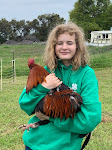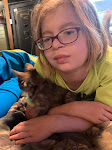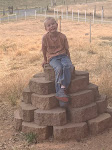Last night’s food Storage class ended up being a really nice cozy affair with a few in attendance but ate an amazing treat made for us by the Blazzard family in their Dutch oven.
Thank you Blazard family for the wonderful peach cobbler.
First I’ll give you a little Dutch oven history. In my research I have found several different histories of the Dutch oven so you can decide which one you want to go by but I will give you a little  of what I have found.
of what I have found.
According to the to book you get when you first buy your Dutch oven from Lodge the “cast iron camp ovens cooked the food that kept America going.” “The first iron kettles and pots date back to the 7th and 8th centuries, but by 16th century Europe, the art of casting iron was widespread and cast iron cookware had become a valued commodity.”
Paul Revere, a blacksmith and silversmith by profession, is credited with the flanged lid of the camp Dutch oven. The flanged lid and bottom legs allow for a fire source to be under the pot and on the lid, making it an actual baking oven at the hearth of campfire.
In and article found in the New Era in 1974 “Dutch Oven Cooking” Sister Thomas says, “Dutch ovens are heavy, cast iron pots that pioneer families used for all types of cooking. Today they are still used by ranchers, prospectors, hunters, fishermen, smart New Era readers, and others who need simple but versatile outdoor cooking equipment.
The outdoor or open-fire Dutch oven has three legs to hold the oven above hot coals for cooking, and a flat lid with turned up edges that will hold coals on the lid for baking. The lid has a handle in the center that allows it to be lifted with a hook, claw hammer, pliers, or forked stick when it is hot or loaded with coals.
There is another type of Dutch oven known as the indoor Dutch oven. It is flat-bottomed with no legs and has a dome-shaped lid adapted for cooking on a stove or in the oven of a stove.”
Now that you have read a little history about the Dutch ovens lets talk about their importance with your food storage and how to use them.
I have said many times before that your food storage is only as good as what you put into it and that you know how to use it. Remember if you can’t cook your food storage why bother storing it.
Now with that said you can use your Dutch oven in four different ways: roasting, frying & boiling, baking, simmering & stewing. All you need to do is check out the oodles of recipes out there or use some of your favorites from your own kitchen.
If you click here you will see a great Chart for Baking with your Dutch Oven by Lodge.
Now a quick little personal story for you all. My family and I went to Yosemite last weekend in our new trailer but our trailer doesn’t have an oven so we decided instead to just buy Dutch ovens and get by that way. So while we were in Yosemite we decided it was a great time to try out our new Dutch oven. We pulled it out and dropped some food in and off the cooking started. I’d say within half an hour give or take we had a great pork chop dinner with all of the fixin’s.
So here’s the food we put into the Dutch oven: pork chops, cut up potatoes, carrots, chopped celery, chopped onions, 2 cans of cream of mushroom soup and Worcestershire sauce. This is a great example of how you can put together your own meal.
At our Food Storage class on last night two different handouts were given out to the class. If you would like your own click here and here.
And if you haven’t already you should really go and check out the great article by Sister Thomas in the New Era about “Dutch Oven Cooking.”
I put together a book of several different pdfs that I found on the internet (with the help of Mama Bear’s neighbor) and I had this with me in class as well. If you too would like to see them here is a list that you can look at yourself:
Dutch Oven Cooking by Larry Hoffman
Dutch Ovens for Backpacking by John W. Russo & Dennis Schmitt
The Dutch Oven Cookbook by Mike Audleman
Ol’ Buffalo Camp Cook by Blaine S Nay
Dutch Oven Dinners by Troop 288
Dutch Oven Desserts by Troop 288
A Scout’s Guide to Dutch Oven Cooking by Roger Tipley
Dutch Oven Cooking by Ray Stern
Dutch Oven Cooking by Utah State University Extension Office
Now then here’s the great recipe Sister Blazzard used to make us the great Peach Cobbler for our treat at the end of class:
Blazzard Family Sundown Cobbler
1 cup flour
1 cup sugar
1 cup milk
1 teaspoon baking powder
½ teaspoon salt
1 egg (if desired)
½ cup melted butter
1 quart fruit (2 cans)
Put butter into pan and let it melt in oven. Pour batter into pan after first mixing it in order given above. Use fruit or berries, canned, or fresh and sweetened. Pour this fruit over batter. Bake in a moderate oven (about 375°) until it is nicely browned and batter is done, about 30-45 minutes.
Serve plain or with cream or ice cream. This cobbler works real well in a Dutch oven over the campfire too.
From the Kitchen of Silvia Farr Blazzard








No comments:
Post a Comment